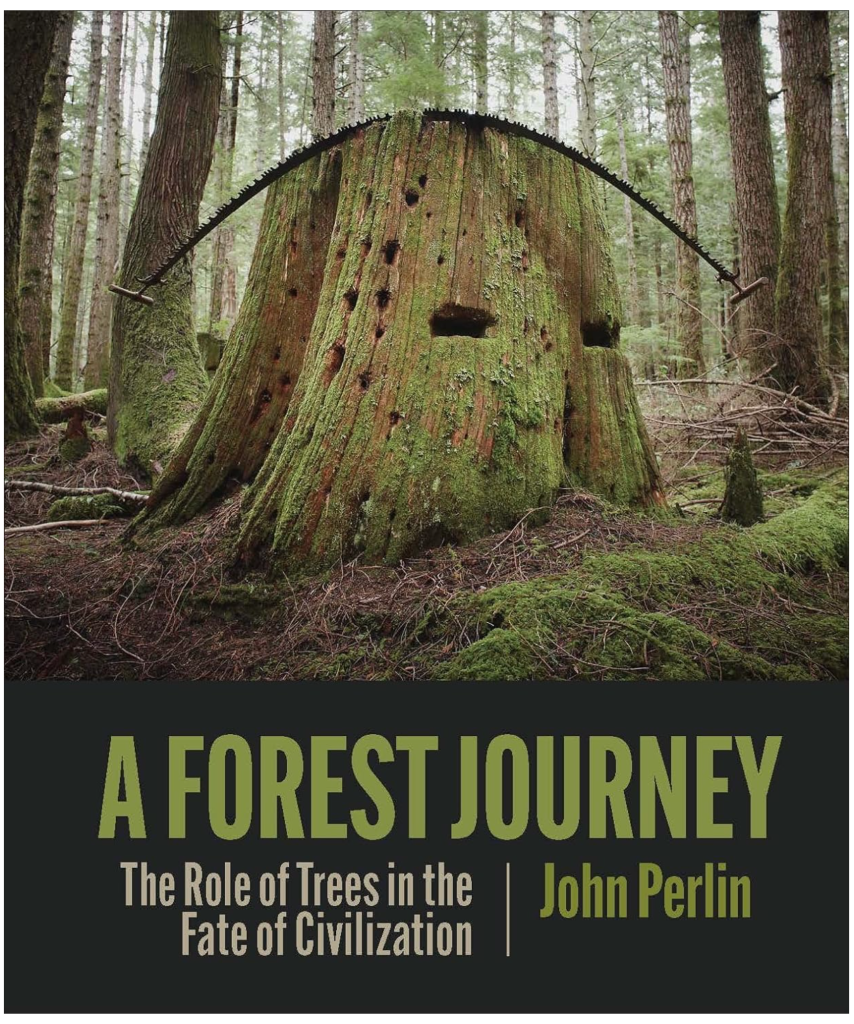Book Review | ‘A Forest Journey: The Role of Trees in the Fate of Civilization’ by John Perlin
A Classic That Has Stood the Test of Time

The first edition of John Perlin’s A Forest Journey was published in 1989. Its unique synthesis of history and science quickly marked it as a classic conservation story. In captivating detail, Perlin showed how essential forests are to life. For thousands of years, trees have been a principle fuel and building material of almost every society. Without vast supplies of wood, the great civilizations of Assyria, China, Mycenae, Greece and Rome, Western Europe, and North America would never have emerged.
And yet, people of all colors and cultures, Perlin wrote, have destroyed great stands of forest along with the indigenous peoples who lived there. The consequences of the headlong destruction of forests were known in 1989, and climate scientists were already sounding warnings. Unfortunately, most of those warnings were disputed and went unheeded.
The second edition appeared 16 years later, in 2005, a year marked by a monster hurricane that slammed the Gulf Coast that August. Hurricane Katrina caused nearly 1,400 fatalities and billions of dollars in property damage. Katrina was a storm of the caliber that climate scientists had warned about, and the extreme damage and loss of life highlighted years of human decisions that ran counter to the region’s ecosystem.
By 2022 when a third expanded and revised edition of A Forest Journey was published by the outdoor gear retailer Patagonia, the world had witnessed dozens of deadly storms, floods, record-smashing wildfires, and soaring temperatures. The impact of human activity in these calamities is undeniable.
We don’t think of wood as the unsung hero of the technological revolution, but trees provided the material for fire that made habitation of cold climates possible; charcoal and wood made it possible to evaporate brine from saltwater to make salt; heat from wood fires melted potash and sand to produce glass. The list goes on and on. Consider the role wood played in transportation, from carts, chariots, and wagons to canoes and ships. Wood-based means of transportation were essential for exploration, trade, manufacture, and warfare. Wood was also central to the fossil-fuel age as large-scale coal mining depended on timber for props, supports, and rails.
The third edition contains dozens of illustrations, color photographs, and maps. Even more comprehensive than the original, it includes new material on India and China as well as the continents of Africa and South America. It’s a beautiful book, but its value extends beyond the aesthetic. Perlin details a compelling case for the protection and preservation of the Earth’s forests, which not only remove carbon dioxide from the atmosphere, but also contribute to keeping the Earth temperate. He writes, “The leaves of trees also emit great amounts of water into the atmosphere, which, in the process of changing into vapor, absorbs heat.” Without the forest canopy in the Amazon basin, for example, seasonable temperatures there could rise by as much as 41 degrees. The canopy also protects the soil from wind, sun, and the erosive force of rain.
A Forest Journey is a classic because it has stood the test of time. It’s a paean to forests and a reminder to us all that civilizations have crumbled when the land reached its limit. After all the destructive storms, floods, and fires of the past decade, we shouldn’t need reminding that we exploit the Earth at our peril. Forests are a gift.
This review originally appeared in the California Review of Books. Editor’s Note: John Perlin was recently interviewed about A Forest Journey on NPR’s Reader’s Corner. To listen to that segment, click here.




You must be logged in to post a comment.